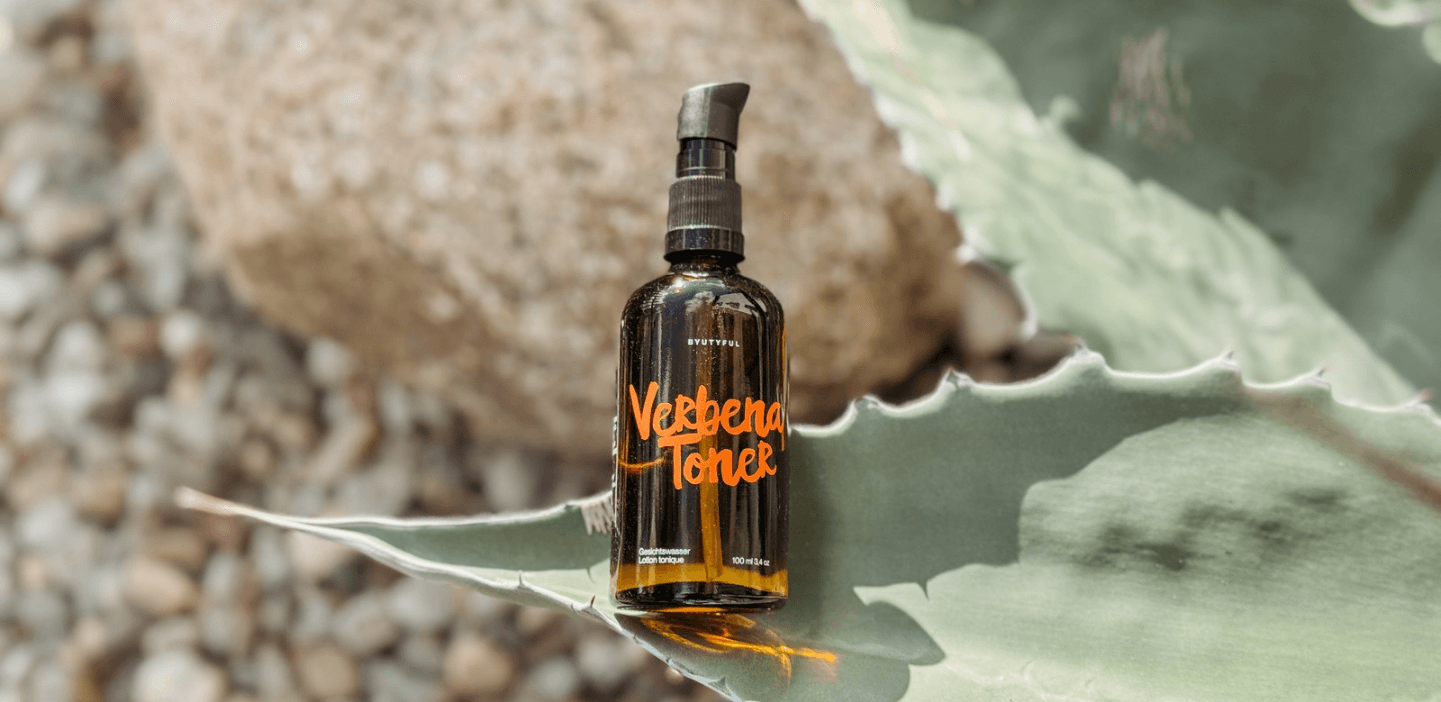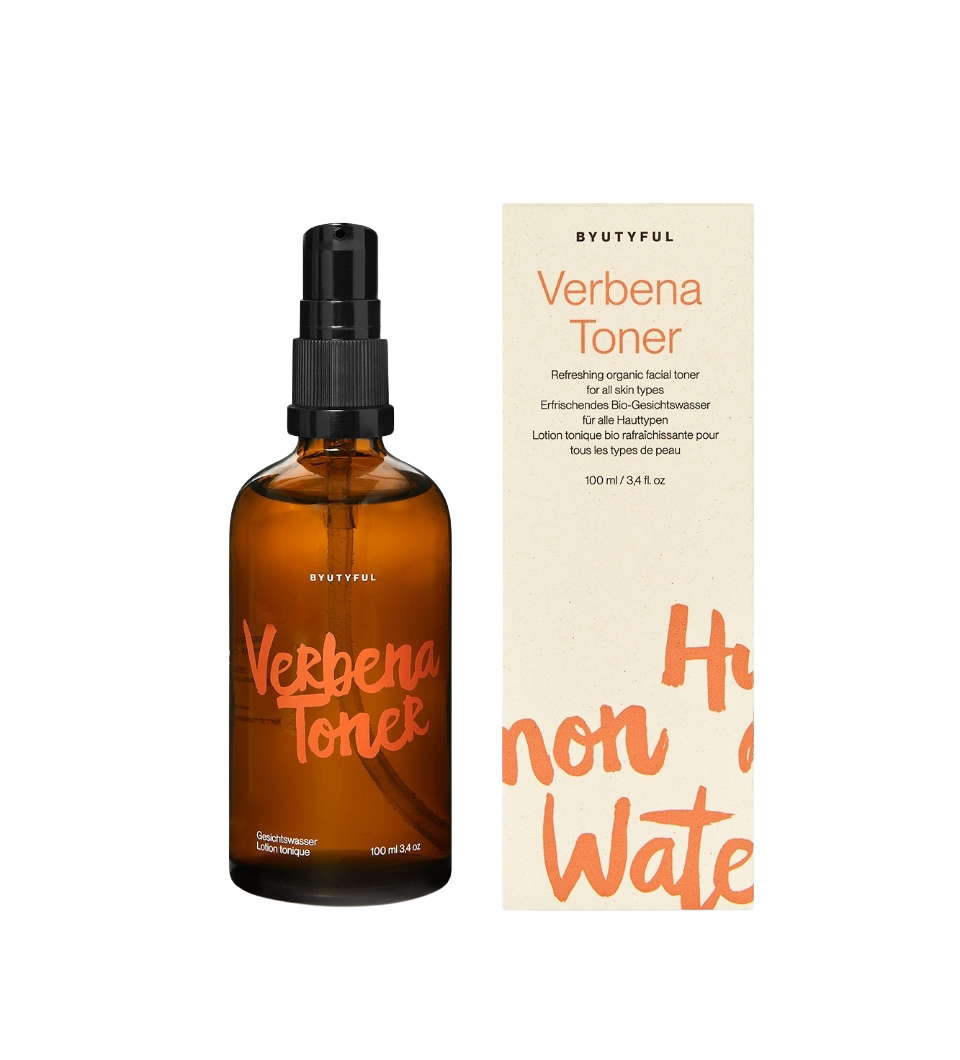Why you absolutely should incorporate a toner into your skincare routine
I’m a huge fan of toners. For me, it’s one of the most important steps in my skincare routine. To my surprise, many people are likely to skip this product. So today, I want to share my love for toners with you. I’ll explain the correct application and what, from my perspective, makes a good toner.
By the end of this post, I hope you’ll be eager to give toner another (or your first) try.
The question that probably comes to mind first is: Is a toner really necessary? Spoiler: Yes, it is!
What actually is a toner?
A toner is the step between cleansing your face, such as using a cleansing balm or foam, and applying your subsequent skincare products like serum or moisturizer. Because it’s a sort of “intermediate step,” many people think it’s redundant. The opposite is true. We’ll get to that shortly. But first, let’s look at where the name toner comes from. The word “toner” comes from the English word “to tonify” - to tone or invigorate. This captures the essence of a toner, which is likely why the term has become established in many languages as well. It’s applied to a cotton pad, which you then use to swipe across your cleansed face. This not only removes any remaining impurities that might cling to your skin from drying with a towel but also ensures the toner is evenly distributed and reaches every part of your face. After using a toner, your skin should feel pleasantly refreshed and slightly damp. Since you don’t use a towel after applying the toner, you can say that your skin is now thoroughly cleaned and ready for the next steps.
Why is a toner an crucial step in facial cleansing?
Now you know that toner refreshes, moisturizes, and removes the last traces of dirt from your skin. So far, so good. But what exactly makes the toner such a multitasker in skincare? It has what you might call “magical” powers, as it optimally prepares your skin for subsequent products by balancing the skin’s pH. Here’s how it works: During cleansing, your skin comes into contact with water. Tap water has a different pH level than our skin. Depending on the region, in Germany it ranges from 7 to 9. The ideal pH level of the skin is between 4.5 and 5.5. Water stresses our skin, and it would take 5-6 hours for the skin to restore balance on its own. During this time, it’s weakened and might not absorb subsequent products effectively.
Consider how much money you might spend on expensive serums and creams, but if your skin isn’t ready to absorb them, they won’t work as well. Additionally, bacteria and other intruders have an easier time if the skin’s pH isn’t in the so-called neutral range. This imbalance can, more or less seriously, exacerbate skin conditions like sensitivity, blemishes, or dehydration. But by using a toner right after cleansing, you support your skin’s regeneration, and the following products can be absorbed and thus work effectively. This is especially important if you’re prone to hormonally-induced blemishes or if your skin feels tight after cleansing. Toner is a crucial step in your skincare routine.

How to use toner correctly step by step
Using toner is straightforward yet incredibly effective. I’ve hinted at it above, but since I can’t share it often enough, here’s a clear step-by-step guide:
1. Cleanse your face
Start your routine with a thorough cleansing. I recommend a gentle cleansing balm. Gentle cleansing is important to avoid excessively irritating or drying out your skin. The choice of cleanser determines the outcome of your skincare: soft, happy skin or dry, tight skin. The former should be your goal.
2. Apply toner
Apply a small amount of toner to a cotton pad. Gently sweep it over your cleansed, dry skin, including your neck. Avoid the eye area if your toner contains alcohol or other irritating ingredients like fragrances. If you’re using a gentle, alcohol-free toner, you can also swipe it over the eye area. Always be gentle and avoid rubbing too hard.
3. Allow to absorb
After application, your skin will feel slightly damp. This is normal. You can enhance the toner’s effects by gently patting it in with clean fingers. This stimulates blood circulation in your skin. Your skin is now perfectly prepared for the next skincare steps.
4. Apply skincare products
If you’re using a facial oil, apply it directly to the still-damp skin and massage it in. Oil needs some moisture to properly absorb into the skin. If you’re using a serum and/or moisturizer after the toner, let the toner fully absorb into your skin before proceeding.
What makes a good toner?
In conventional cosmetics, especially in drugstores, toners often consist of 90-95% just water. They include a few (typically low-dose) active ingredients like panthenol or niacinamide, fragrances, and preservatives. That’s it. We’re spending (a lot) of money on water. The only difference from tap water is that the toner is formulated to match the skin’s pH. In natural cosmetics, however, flower waters, also known as hydrosoles, are often used instead of plain water. These are steam distillates from plants like orange blossoms, lavender, or roses. They not only enchant us with their subtle, natural scent but also refresh naturally. Since high-quality floral waters are quite expensive, manufacturers either use lower-quality ones or mix them with - yes, you guessed it - water. Another option is pure hydrosole, which might lack additional moisturizing or soothing ingredients that define a toner. Often, natural cosmetic toners also contain alcohol as a cheap bio-preservative, but this is also a foe for the skin. I can understand why some might perceive toner as unnecessary.
You wouldn’t believe how many times I’ve stood in front of the drugstore or natural cosmetics shelf, desperately searching for a toner that:
- offers high-quality natural cosmetics
- contains no alcohol
- has a fresh, natural scent without added perfume
- doesn’t dry out or irritate my skin
- contains few but high-quality ingredients
So, I developed one myself and incorporated everything that makes toner an indispensable part of my skincare routine. And I left out what would downgrade its necessity.
Powerful yet simple ingredients
The Verbena Toner transports me to the South of France with its enchanting lemon verbena scent every morning and evening, fueling my love for toner even more—with just 10 high-quality ingredients. Let me briefly introduce them:
- Lemon Verbena hydrosole: antioxidant, soothing, refreshing
- Sodium PCA: moisturizing, skin-protecting
- Glycoin (Glyceryl Glucoside): cell-regenerating, moisturizing, antioxidant, firming
- Hyaluronic Acid: intensely moisturizing, plumping
- Pentylene Glycol: moisture-binding, antimicrobial
- Gluconolactone: smoothing, skin-renewing, antioxidant
- Aloe Vera: soothing, moisturizing, anti-inflammatory
- Arginine: moisture-binding, regenerating, stabilizes pH
- Sodium Benzoate & Calcium Gluconate: part of our mild yet effective preservative system
Are you also joining the “Verbena Toner Love Club”?

